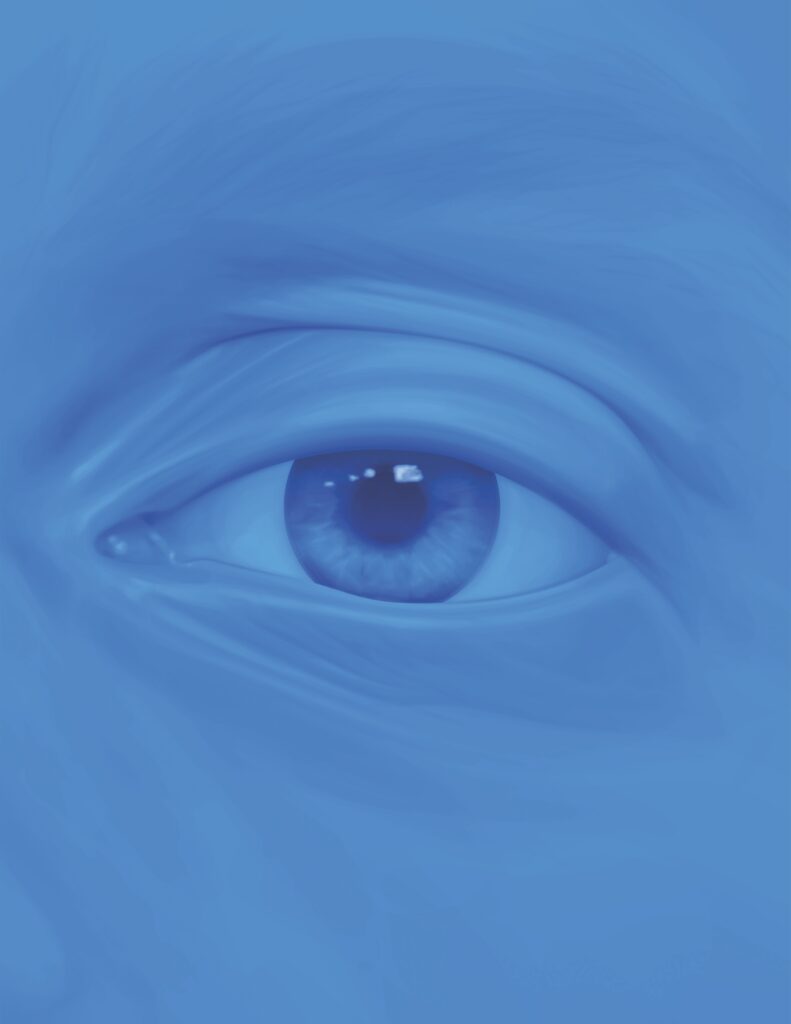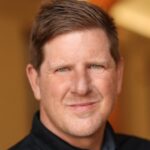The early days of a psychedelic resurgence?
Research with illicit drugs to treat anxiety, depression and PTSD inches forward

When he helped launch the course PSYC 215: Introduction to Psychedelic Medicine in the fall of 2019, Gianni Glick knew there was a resurgent wave of interest in medical research devoted to the use of psilocybin and MDMA for tough-to-treat disorders like anxiety, depression and post-traumatic stress disorder.
As a psychiatrist involved in clinical trials, he had watched firsthand as these illicit drugs, cleared for research purposes, worked seeming miracles on stuck brains that hadn’t budged on more conventional interventions.
One thing he didn’t know while fine-tuning the syllabus for the course, among the first of its kind in a major medical school setting: The 100 available seats wouldn’t be nearly enough. “Every year the class fills up within 15 minutes of the start of the enrollment period,” said Glick, MD, assistant professor of psychiatry and behavioral sciences. “Sometimes we have people packed in, standing along the wall, just to listen.”
The popularity of the course — co-taught with Trisha Suppes, MD, PhD, professor of psychiatry and behavioral sciences, and Boris Heifets, MD, PhD, assistant professor of anesthesiology, perioperative and pain medicine — reflects a skyrocketing global interest in psychedelic therapies since COVID-19 magnified the dire need for better mental health treatments.
“There is such hope and hunger for this to work because there hasn’t been much mental health innovation the past four decades.”
Boris Heifets, assistant professor of anesthesiology, perioperative and pain medicine
It’s mirrored by Stanford Medicine psychedelics research, past, present and in the pipeline. It’s also indicative of a once-flourishing psychiatric movement that might just be rising from the ashes to meet the moment of need.
“There is such hope and hunger for this to work because there hasn’t been much mental health innovation the past four decades,” Heifets said. “We don’t yet understand these drugs well enough, so we need to tread forward and study them cautiously.” But studied they must be, today’s researchers agree — with all the open-mindedness once espoused by the likes of Harvard University psychologist Timothy Leary of “Turn on, tune in, drop out” fame or one-time Stanford University student Ken Kesey’s band of Merry Pranksters.
“If these compounds were discovered today via modern neuroscience advancements and one could rid themselves of the countercultural associations, researchers would say this might represent a major breakthrough for psychiatry,” said Nolan Williams, MD, director of the Stanford Brain Stimulation Lab, “They appear to do many of the things we’ve been attempting to do with psychopharmacology and psychotherapy.”
Fly safe
There is one thing science has concluded with conviction about psychedelic therapy for mental health conditions: A well-trained copilot — a therapist, psychiatrist or psychologist — is essential to a trip’s successful therapeutic outcome.
“These drugs allow you to do things you can’t do with waking consciousness,” Williams said. “But they really shouldn’t be recreational substances — they’re too powerful.”
Psilocybin — the psychoactive ingredient in magic mushrooms — and MDMA — the synthetic drug known as ecstasy or “molly” — are the primary substances gaining scientific traction. Both are illegal under U.S. federal law, but exceptions are made for their use in medical research.
The anesthetic ketamine — also known as the party drug Special K — is considered “psychedelic adjacent” because its dissociative effects can feel similarly mind-altering — more of a stepping-outside-one’s-body experience than a full-on technicolor Alice in Wonderland-style kaleidoscope trip. Ketamine is also much easier to study because of its longtime legal status within medicine.
“These drugs allow you to do things you can’t do with waking consciousness. But they really shouldn’t be recreational drugs — they’re too powerful.”
Nolan Williams, director of the Stanford Brain Stimulation Lab
Suppes is organizing the core group of Stanford Medicine investigators, among the thousands worldwide, who are aggressively studying how these compounds work on neural pathways. Suppes; Heifets; Williams; Karl Deisseroth, MD, PhD; Carolyn Rodriguez, MD, PhD; Leanne Williams, PhD; and Charles DeBattista, MD — all senior faculty in the Department of Psychiatry and Behavioral Sciences investigating the drugs’ effects on cognition or specific disorders — have formed a working group to share ideas and find collaborative research opportunities.
In the 1950s and ’60s, before they became known as illicit drugs used for recreation, psychedelics were widely researched around the world for psychiatric use — 40,000 subjects tested led to 1,000 papers written. But as they leaked from the lab into the counterculture party scene, President Richard Nixon passed the Controlled Substances Act as part of his War on Drugs initiative in 1971 — essentially grinding all medical research on the drugs to a halt.
Now, as government regulation loosens, studies are coming fast and furious at places like Johns Hopkins and Yale universities; University of California, San Francisco; and Stanford Medicine. Bolstered by this growing body of science, the U.S. psychedelic medicine market is expected to bloom into a $12 billion industry by 2029. A scan of the global database for ongoing clinical trials shows more than 1,800 that involve psilocybin, MDMA or ketamine. Add in LSD and that total soars higher.
As the number of Americans facing mental health challenges has skyrocketed, the U.S. government has gotten on board. In December 2023, Congress passed legislation that included funding for clinical trials of psychedelic-assisted therapy for active-duty service members. This January, the Department of Veterans Affairs announced that it will also begin funding psychedelic-assisted therapy to treat veterans with PTSD and depression. Beyond the use by veterans, the FDA is expected to approve MDMA for treating anyone with PTSD by this fall.
Australia has moved even more swiftly: In July 2023 it joined Switzerland as the only countries to make medicinal psychedelics a reality.
Is mind expansion the point?
Stanford Medicine is uniquely contributing to psychedelic research, Heifets believes, in its mechanistic approach to studies: the attempts to understand how the drug, the setting, the guidance, the “trip” and the expectation all factor into the outcomes.
“We’ve done some very creative science to get at issues such as, ‘What is the experience of dissociation like? What is the neurophysiology of tripping? How does hope factor into the equation?’” he said. “That’s where I see our Stanford collaborative group really setting itself apart and bringing something unique to the study of psychedelics.”
For instance, Heifets and collaborators found a way to get around psychedelics’ placebo-controlling limitations — how do you fake a psychoactive experience? — by administering ketamine to depressed patients who were already under anesthesia. The result: Depression levels remitted even for those who didn’t receive ketamine.
“We’re seeing signs that nondrug factors, such as giving patients hope, drive this process,” Heifets said.
Some of that research tells Heifets that efforts underway elsewhere that focus on removing the psychedelic effects of psychedelics might be missing the point.
“There is a growing body of evidence,” he said, “that the experience matters.” Heifets and collaborators think they’ve identified multiple reasons. MDMA and psilocybin both appear to have the ability to dissolve one’s sense of self to a point where formerly rigid thought pathways can be altered. Psilocybin seems to enhance the brain’s capacity for change — known as neuroplasticity — something that mental illness frequently stifles.
“He described feeling more alive, more connected to the world, safe in his own body again — and not just then, but for months afterward.”
Gianni Glick, assistant professor of psychiatry and behavioral sciences.
The consciousness-expanding ability of these substances is just one factor. Working with a professional who sets expectations before the trip, provides supervision in a safe environment and helps process the material that arises is an equally important part of the equation, the science is showing.
Suppes and collaborators are close to publishing a study on the effects of psilocybin used by veterans with treatment-resistant depression. “What we’ve seen so far has been pretty astounding — we just need to do more,” said Suppes, noting that pilot studies have not always found the strength of the psychedelic experience to be key to response. She and co-investigators have embarked on a follow-up psilocybin dosing with most of the veterans in her original study and are set to launch another comparing the effects of MDMA and cognitive behavioral therapy.
Stanford Medicine’s most talked-about peer-reviewed research on psychedelics involved the drug ibogaine, which has not to date received authorization from the U.S. Food and Drug Administration. That’s why the compound, made from the root of a shrub native to Central Africa, was administered to study participants outside the country, in Mexico. The research looked at the impact of a single dose of ibogaine on 30 special operations veterans with traumatic brain injuries.
The improvements in mental health were “the most dramatic I’ve ever captured from a pharmaceutical compound in an early-stage trial,” said Nolan Williams. Symptoms of depression, anxiety and PTSD were dramatically reduced.
As a practicing psychiatrist, Glick was drawn to the therapeutic potential of psychedelics based largely on seeing a unique type of healing during clinical trials. He vividly recalls an anxious middle-aged patient who was scared of human interaction. When he arrived for his first-ever psilocybin dose, he had been holding in years of trauma, feeling uncomfortable in his own skin.
“He had sealed away whole pieces of his personality, and I remember watching him recover entire parts of himself right there,” he said. The session was intense — at times “painful and frightening” — but Glick said the patient persevered and came out on the other side with a renewed sense of vitality.
“He described feeling more alive, more connected to the world, safe in his own body again — and not just then, but for months afterward,” Glick said. “To see someone on the path of becoming whole again after a single dose, that told me there was something significant going on there.”
Online extra
Psychedelics, placebo, and anesthesia dreams: A Stanford University Wui Tsai Institute’s podcast series conversation with, Boris Heifets, MD, PhD, assistant professor anesthesiology, perioperative and pain management.

